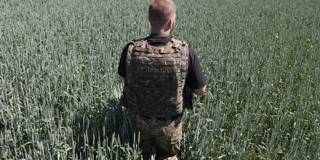Poor countries should not be significantly affected by the loss of Ukrainian agricultural products. While Russia’s war has undoubtedly caused real problems in global food markets, they are different and more complex than what most news coverage suggests.
CHICAGO – Russia’s blockade of Ukrainian food shipments and the potential loss of Ukrainian harvests due to disruptions from the war have dominated headlines in recent months. Between February and June, global wheat prices surged by more than 60%, fueling humanitarian concerns and warnings from international development agencies about increased food insecurity in poor African and Asian countries.
But many of these headlines have been misleading. In poor countries, around 80% of all calories come from cereals. The most important is rice, which accounts for 27% of per capita caloric intake in the developing world, and is the main staple in Asia. In countries such as Myanmar and Cambodia, rice makes up 80% of calories.
Maize is the most important subsistence cereal in Africa. Around 30% of the world’s maize is consumed by African countries, with people in Malawi, Lesotho, and Kenya consuming an average of 90-180 kilograms (198-397 pounds) per year. Wheat, which is the second most important cereal globally, is relatively unimportant in poor countries. For example, annual per capita wheat consumption is only around 17 kilograms in Sub-Saharan Africa.

CHICAGO – Russia’s blockade of Ukrainian food shipments and the potential loss of Ukrainian harvests due to disruptions from the war have dominated headlines in recent months. Between February and June, global wheat prices surged by more than 60%, fueling humanitarian concerns and warnings from international development agencies about increased food insecurity in poor African and Asian countries.
But many of these headlines have been misleading. In poor countries, around 80% of all calories come from cereals. The most important is rice, which accounts for 27% of per capita caloric intake in the developing world, and is the main staple in Asia. In countries such as Myanmar and Cambodia, rice makes up 80% of calories.
Maize is the most important subsistence cereal in Africa. Around 30% of the world’s maize is consumed by African countries, with people in Malawi, Lesotho, and Kenya consuming an average of 90-180 kilograms (198-397 pounds) per year. Wheat, which is the second most important cereal globally, is relatively unimportant in poor countries. For example, annual per capita wheat consumption is only around 17 kilograms in Sub-Saharan Africa.